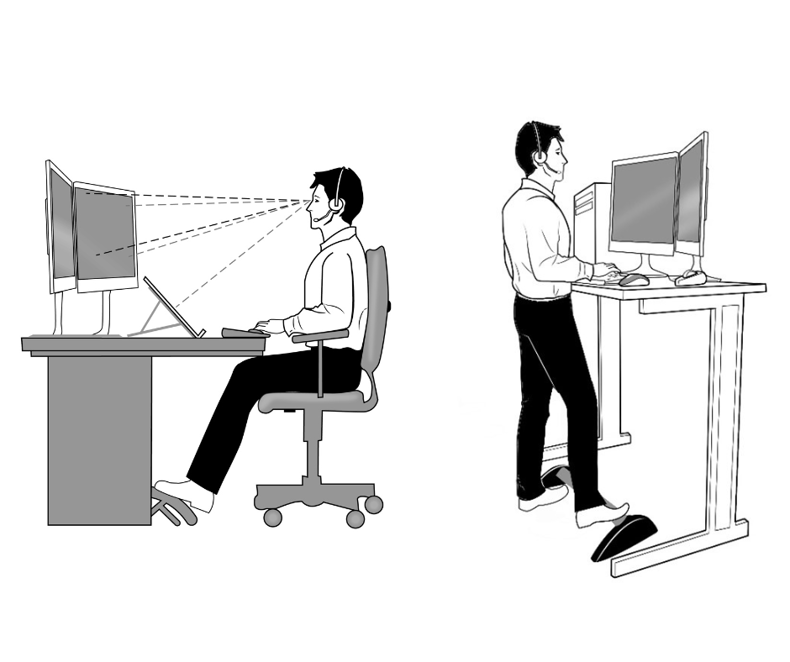
The use of a footrest is often an optional add-on for a seated or standing workstation. Many employers are in a quandary as to whether to provide this curious device. And many employees don’t recognize when they could use one or even how to use one when placed under the workstation.
When it comes to the application of a footrest there are several telltale signs and indications to look for when determining the manner and means in which it can be utilized, along with the best type to use.
Footrests Provide Stability
There are many great benefits that can come from using a footrest. Footrests can be used at various seated or standing workstations, not just when computer tasks are performed.
Understanding proper hip, knee, and lower extremity posture while seated is an important part of recognizing whether a footrest would help. The body needs stability when seated and it starts from the bottom up, with the feet on the floor. When that is not feasible, a footrest acts as the ground and offers the stability needed. Equally, when a tall chair or stool is used, a foot ring is helpful, but an elevated footrest is even better for lower extremity support.
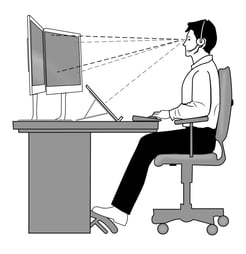
Figure 1. Using a footrest while sitting at the computer improves posture and offers reduced knee strain when properly positioned.
Foot support can also provide benefits during static standing. A footrest allows intermittent weight shift, hip, back, and pelvic positional unloading and reduces fatigue when staying in one position.
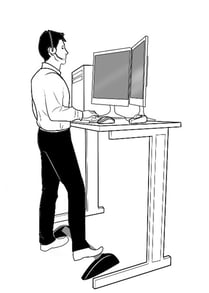
Figure 2. Static standing can be relieved with a footrest to allow for
intermittent weight shift from one foot to the other.
Ten Benefits of a Footrest
General office ergonomics guidelines recommend feet remain on the floor while seated. If that is not possible, then a footrest or foot ring is suggested.
1. Intermittently extending the legs onto an angled footrest opens the knee and hip angles to improve blood flow helping to improve circulation of the distal lower extremities during prolonged sitting events, especially rocking footrests. (Hedge and Sherman, 2016)
2. Reduces forward sitting habits by facilitating better chair contact with the seat, lumbar support, and backrest.
3. Reduces contact stress, and pressure to the posterior thighs and knee space due to a deep seat, where there is contact with the seat edge. Improves weight distribution through the buttocks and thighs.
4. It is necessary for short-statured individuals if their feet don’t reach the floor to provide a stable base of support. This is especially important at a tall workstation or work counter requiring the chair to be elevated, which can cause the legs to dangle (creates increased pressure under thighs and impacts circulation).
5. Using a tall footrest in the leg well space allows those on stools to keep their legs out in front rather than tucked under on a footing or dangling.
6. Using a footrest at a standing station allows alternate foot placement and weight shift during limited periods of static standing.
7. If knees are bent at 90 degrees or greater for too long, they may experience discomfort and pain. More so crossed or bent knees tucked underneath the chair can cause knee strain. The use of a footrest reduces joint forces across the top of the knee (less than 90 degrees) and improves lower extremity positioning while seated.
8. Use a footrest for intermittent foot placement between the floor and the footrest to improve leg mobility during static sitting.
9. A footrest can improve comfort when sitting upright and with reclined sitting in a chair.
10. Footrests are a cost-effective solution to help with back and lower extremity discomfort associated with sitting.
Balanced Sit, Stand, and Footrest Use
There is a balance to sitting, standing, and using a footrest throughout your day.
In general, it is recommended to stand routinely and move throughout the day. Suggestions include standing four times an hour and taking 15 seconds to stand. Or stand 5-8 minutes every 30 minutes to an hour. Some guidelines promote standing up to 40 minutes at a time, about two to three hours total per day.
Perform alternative tasks that include standing such as:
• When the phone rings or you need to use your cell phone and don’t need to use the computer
• To retrieve the paper from the printer
• To drink water or coffee
• When someone enters your office or cubicle
The bottom line is to rotate your postures routinely with intermittent footrest use as an option.
Tips on How to Select a Footrest:
There are no fixed rules on footrest design and quality. There are essentially two types of footrests, but lots of variations in between. Those that go below a seated fixed height desk (23”-30”) and those that are elevated and used for work counters (32”-42”H). Some footrests are dynamic and offer a gentle rocking motion when pressure is applied, others are specifically designed for standing.
When shopping for a footrest, here are a few tips:
1. Avoid cheap plastic footrests. These often become brittle causing them to crack. They also crack with any pressure from leaning on them.
2. Select a footrest that has a fixed or adjustable angle of 30-45 degrees or 4-6” high measured from the back and tapered lower to the front, where the feet are placed.
3. The footrest should be at least 15”-24” wide to support the natural distance between both feet when the legs are relaxed in sitting.
4. For tall work counters, select a tall height adjustable footrest with a range of 4”-12”H.
5. Don’t stand on a footrest!
6. Select a footrest made of durable material for long-term use, such as metal or aluminum. Grooves or texture help to secure feet and minimize slippage but shouldn't block movement of the feet.
7. Footrest should be easy to adjust if it is adjustable.
8. Avoid heated footrests as this feature is not essential or practical with shoes on. This can also be a fire hazard.
9. The footrest should not push your knees higher than your hips when in use, causing increased pressure to your lower back and reduced hip angle.
10. A broken footrest should be discarded or recycled.
Types of Footrests
The footrests shown below have been identified by the author as reliable, durable, and comfortable for users. This is not a paid advertisement or endorsement of the manufacturer and model.
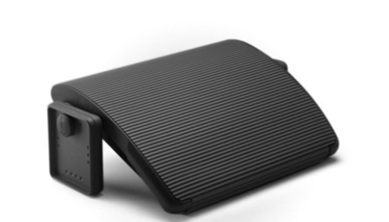
Figure 3. Multi-height adjustable Details/Steelcase footrest. |
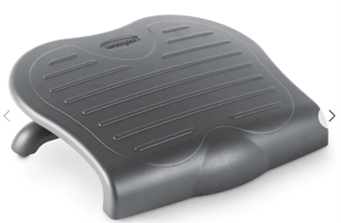
Figure 4. Two-level height adjustable Kensington SoleSaver footrest. |
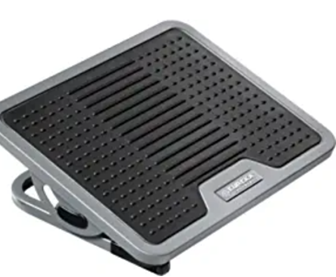
Figure 5. Eureka rocking and locking footrest. |
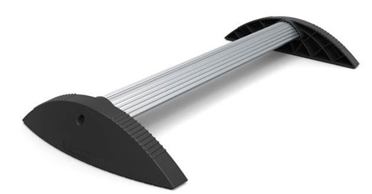
Figure 6. Safeco Office Furniture Stabilizing Footrest by Focal Upright™ for sit and stand use. |
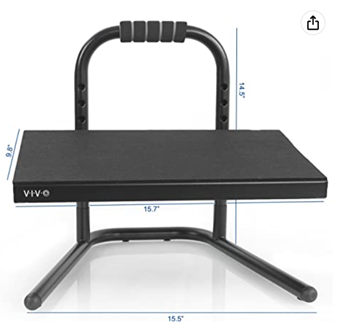
Figure 7. Vivo tall footrest for work counters. |
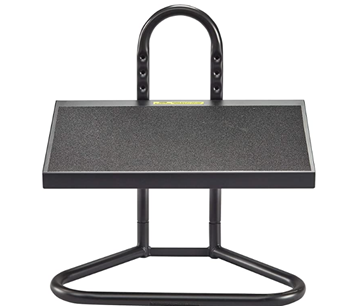
Figure 8. Safeco tall footrest for work counters. |
There are many types of footrests in the marketplace like those presented here. The average cost of a footrest ranges from $29 to $159.
Read all specifications before purchasing to ensure the footrest selected will meet the needs of the individual or situation. Measure for the best fit that will provide the desired support.
Most importantly, provide your employee with training on the proper use of the footrest to ensure appropriate placement, use, and benefit.
To learn more about ergonomic products, what to buy, and how to choose them, download our Ultimate Buyer’s Guide.
Do you use or recommend footrests? What is your experience? Add to the footrest conversation by leaving your comments below.


Comments (2)